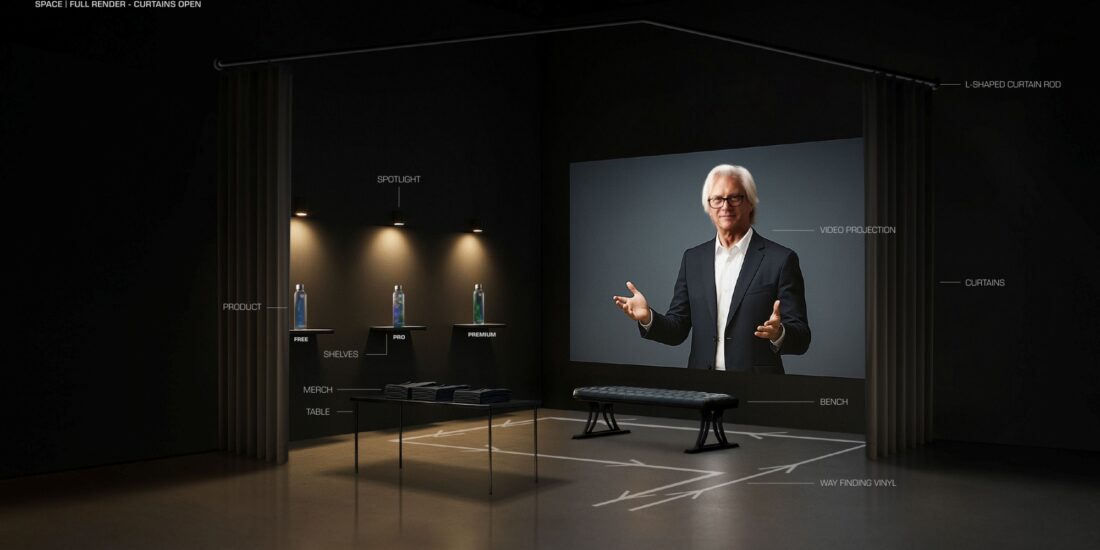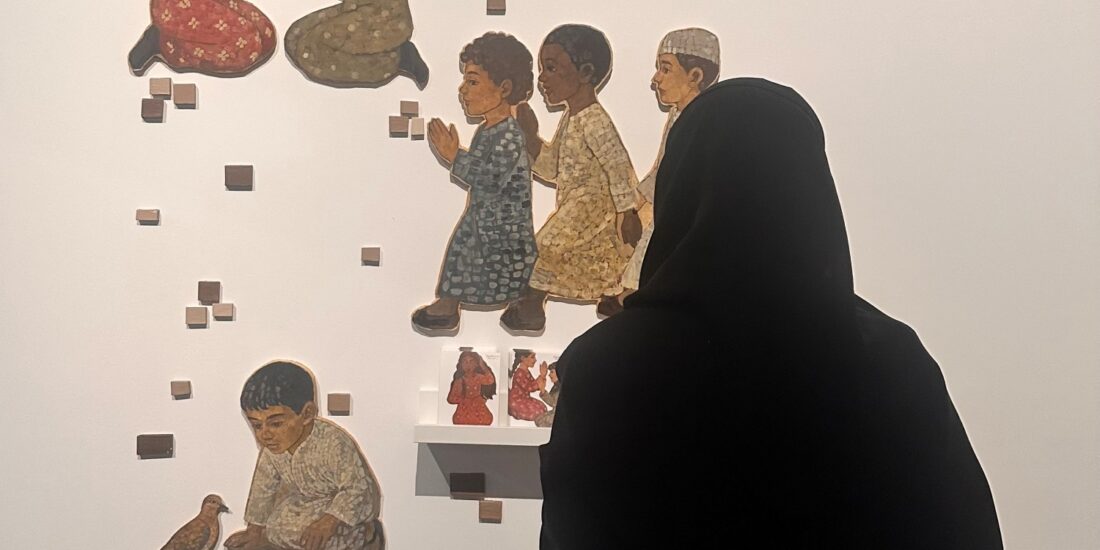VCUarts Qatar Student Highlights the Symbolism of Al Ardha Dance
Through her final year project showcased at Art & Design Now at M7, which is on show till July 9, 2025, VCUarts Qatar Art History student Maryam Abdulaziz A A Alsowaidi offers a fresh perspective on Qatari heritage. Her research unpacks the deep-rooted meanings of the Al Ardha dance and the cultural symbolism of swords, drawing attention to the ways tradition continues to shape national identity today.
 At the VCUarts Qatar Final Show, students showcased a diverse range of projects that celebrated creativity, culture, and critical thinking. Among these, Maryam Abdulaziz A A Alsowaidi’s Art History project stood out for its heartfelt dedication to preserving Qatari heritage. Through an ethnographic exploration of the Al Ardha dance, a traditional sword dance central to Qatari identity, Maryam brought to life a story that is personal and culturally significant.
At the VCUarts Qatar Final Show, students showcased a diverse range of projects that celebrated creativity, culture, and critical thinking. Among these, Maryam Abdulaziz A A Alsowaidi’s Art History project stood out for its heartfelt dedication to preserving Qatari heritage. Through an ethnographic exploration of the Al Ardha dance, a traditional sword dance central to Qatari identity, Maryam brought to life a story that is personal and culturally significant.
A Personal Inspiration
 The inspiration for Maryam’s project came from a moment within her own family. “It all started at my brother’s wedding,” she recalled. Watching her family perform the Al Ardha sparked her curiosity about its roots and historical relevance. Her initial research revealed a surprising gap as she realised that very little had been formally documented about this important cultural tradition. This realisation became the driving force behind her project.
The inspiration for Maryam’s project came from a moment within her own family. “It all started at my brother’s wedding,” she recalled. Watching her family perform the Al Ardha sparked her curiosity about its roots and historical relevance. Her initial research revealed a surprising gap as she realised that very little had been formally documented about this important cultural tradition. This realisation became the driving force behind her project.
From Observation to Storytelling
Maryam’s approach combined visual research, video analysis, and in-depth interviews. She studied existing footage of the Al Ardha dance and carefully observed the movements, rhythms, and cultural symbols embedded within the performance. However, it was her interviews with family members and a local sword shop owner that truly enriched her project. “These personal stories provided the kind of details that you can’t always capture on film,” Maryam explained.
Her final piece is not just a visual record, it’s an educational tool designed to immerse the audience in the sensory power of the dance, highlighting its significance in Qatari history and culture.
Choosing the Right Approach
 For Maryam, an ethnographic and sensory-driven method was the most effective way to tell this story. “I wanted people to not just see the dance but to feel its strength and energy,” she said. By using this approach, she hoped to convey the cultural power of Al Ardha beyond its surface-level performance, allowing the audience to truly connect with its essence.
For Maryam, an ethnographic and sensory-driven method was the most effective way to tell this story. “I wanted people to not just see the dance but to feel its strength and energy,” she said. By using this approach, she hoped to convey the cultural power of Al Ardha beyond its surface-level performance, allowing the audience to truly connect with its essence.
One of the biggest challenges Maryam faced was cultural accessibility. Due to traditional norms, women are often restricted from attending male-only dance performances at weddings, which limited her ability to document multiple events. Fortunately, her brother’s wedding provided a rare opportunity to capture authentic footage.
While this limitation meant her research was based on a single event, Maryam sees it as a starting point. “Future weddings will give me more opportunities to expand this study,” she said optimistically.
A Path Toward Cultural Preservation
Maryam’s greatest sense of pride comes from the educational impact of her project. “I’m most proud that this project raises awareness about the Al Ardha dance and the cultural symbolism of the swords,” she said.
Looking ahead, she plans to continue her research into underrepresented areas of Qatari heritage. “This project has been a catalyst. I want to pursue a career in cultural research and education, focusing on sharing and preserving our traditions,” she said.
Through her thoughtful work, Maryam Abdulaziz A A Alsowaidi is contributing to the documentation and preservation of Qatari cultural practices that might otherwise fade from collective memory. Her project is not just an academic exercise, it’s a call to recognize, celebrate, and safeguard the living traditions that shape national identity.




